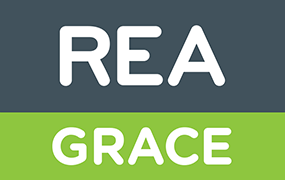The rise in the price of an average three bedroom semi detached house in Dublin city has slowed to 0.66% in the first three months of 2015
23rd April 2015
The rise in the price of an average three bedroom semi detached house in Dublin city has slowed to 0.66% in the first three months of 2015, according to a national survey carried out by Real Estate Alliance.
The Real Estate Alliance Average house index concentrates on Ireland's typical stock home, the three-bed semi, giving a picture of the property market in towns and cities countrywide.
The average three-bed semi in Dublin City now costs €381,667, and when Dublin city and county are taken together, prices have actually fallen by 0.28% from €353,500 to €352,500 in the first three months of the year.
While the market has been flat in South Dublin and Dun Laoghaire generally with no movement in Q1, there were price falls of -3.03% in the Rathcoole area and a rise of 4.55% in Tallaght.
While demand is high for properties close to the €220,000 threshold, the Central Bank’s restrictions on deposit requirements have had an immediate effect on the capital’s housing market, with lack of suitable supply another major factor.
It now takes seven weeks to sell the average house in South Dublin, a figure that has increased from six weeks since September 2014.
“There was slight flurry of activity in January but prices seem to have stabilised,” said Ed Dempsey from REA Dempsey.
Martin O'Donnell from REA O'Donnell in Carrickmines says the market in his area has levelled off, especially for higher-end dwellings, and that lack of supply of three bed houses is still an issue.
Meanwhile, Anthony McGee from REA McGee in Tallaght sees continuing pressure on rents in his area due to lack of available properties.
The average semi detached house nationally, including Dublin, now costs €187,153 the latest REA survey has found – a rise of 16.23% over the past 12 months.
However, the average house has risen by just 1.32%, or €7,005, across the country over the December 2014 figure of €184,713 – and the lack of a supply of suitable housing is a feature of the market across the country.
“There is an acute lack of supply of three-bedroom family homes because it is still not financially viable in many areas for builders to construct homes and make a profit,” said REA Chief Executive Philip Farrell.
“Following the Q4 slowdown, Dublin is now feeling the joint effects of the abolition of the Capital Gains Incentive and the and the introduction of increased deposit requirements by the Central Bank,” said Philip Farrell.
“However, in areas of the capital where average values are below the €220,000 threshold, strong demand still exists from both first time buyers and investors.”
And while Dublin led the way in the market recovery last year, prices have fallen by -0.28% in Dublin city and county in the opening quarter, where the average semi-d now stands at €352,500.
In a complete shift in the market, the biggest increases over the last year have come from what is termed Tier Three – the country areas, outside of the pale and the major cities, which have gone up by 17.28%, ahead of Dublin city’s 17.18%, and 14.82% when Dublin city and county are combined.
Over the past six months, property price rise rates in the rest of the country (5.1%) have more than trebled that of the capital (1.55%).
In the opening quarter this year, there have been significant increases in Carlow (7.50%) Kilkenny City (7.41%), Waterford City (5%) and Wexford (8%), while the rise in sterling has seen a jump in property prices in Bundoran in Donegal of 7.69%.
